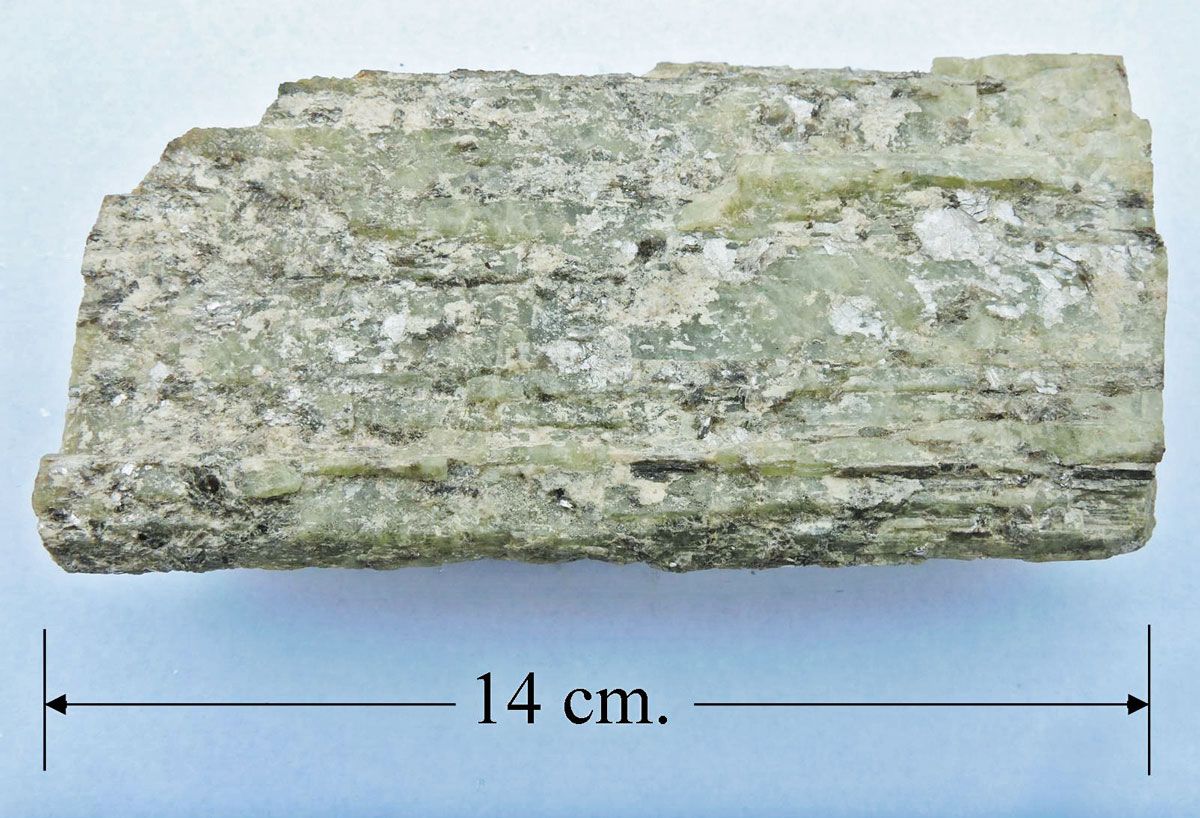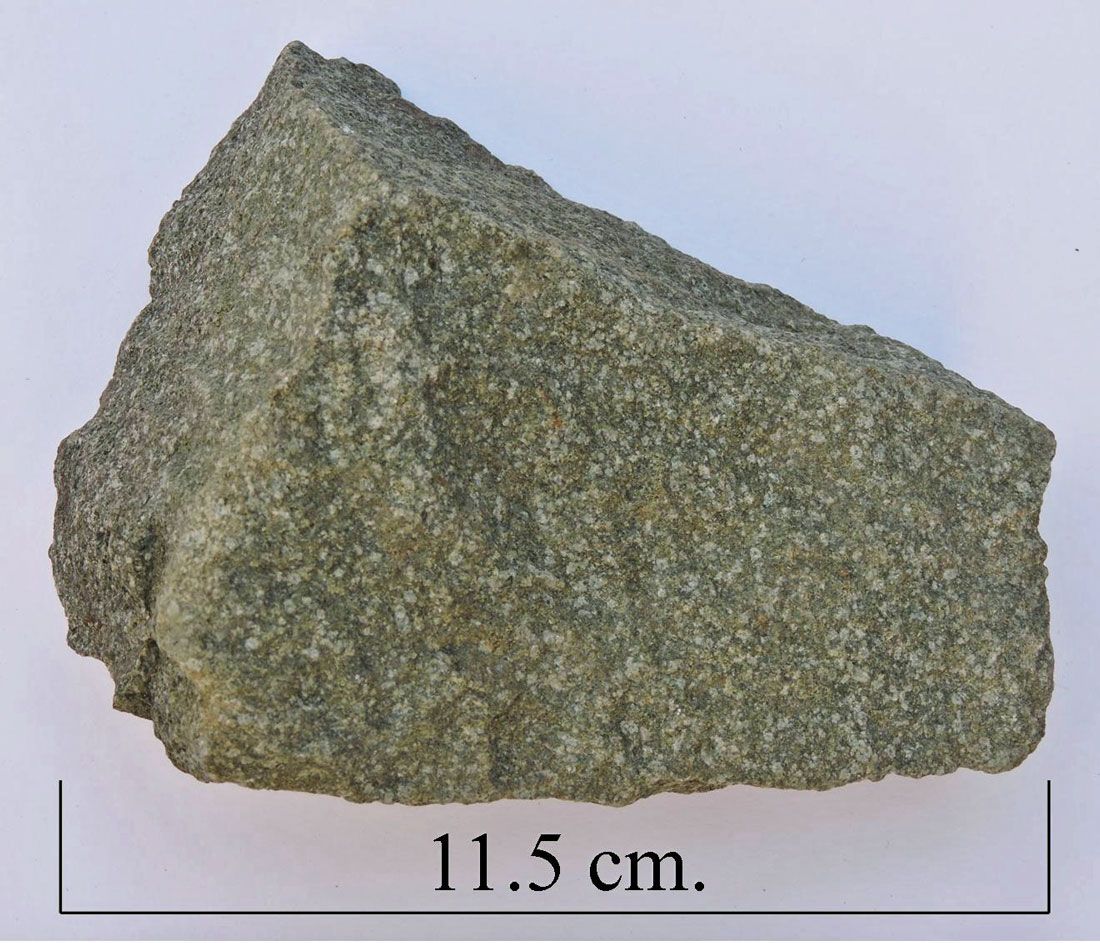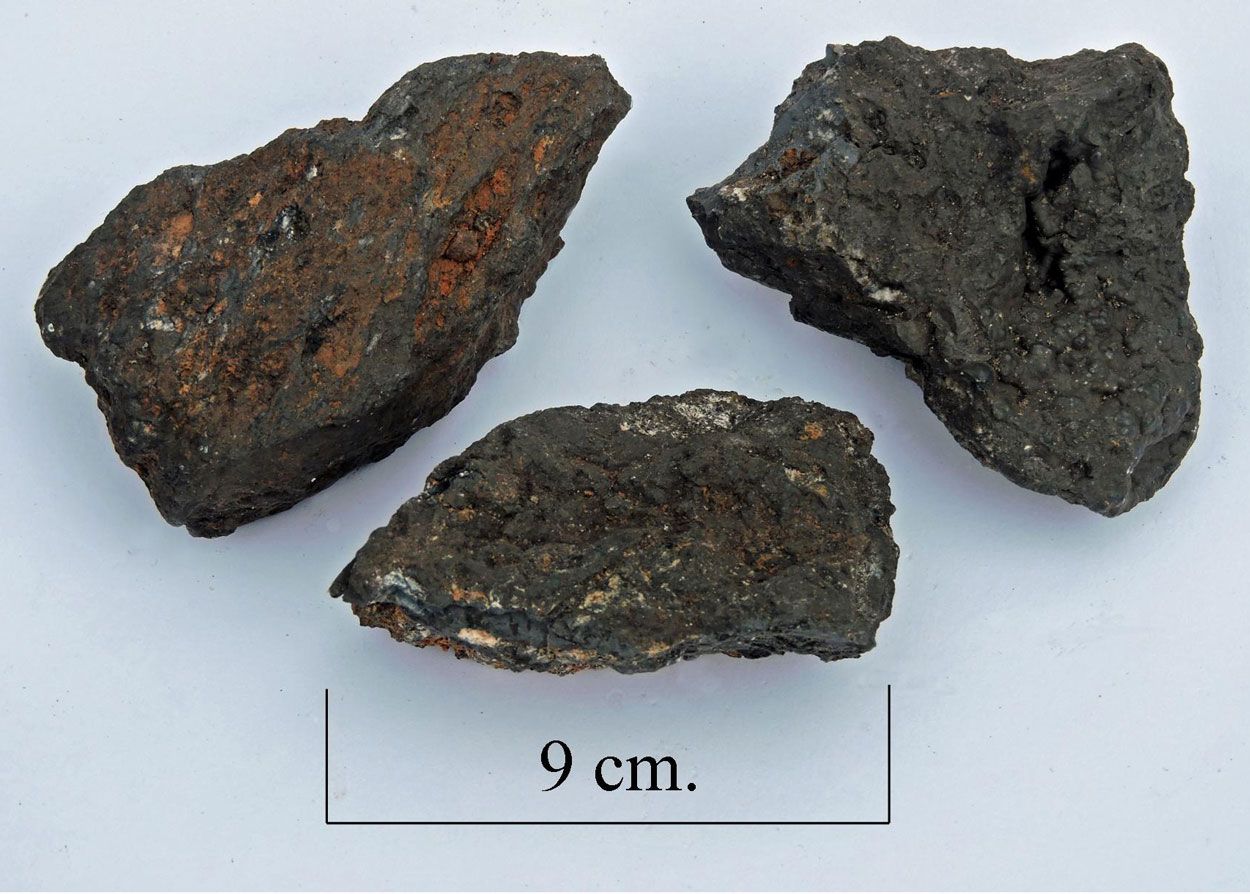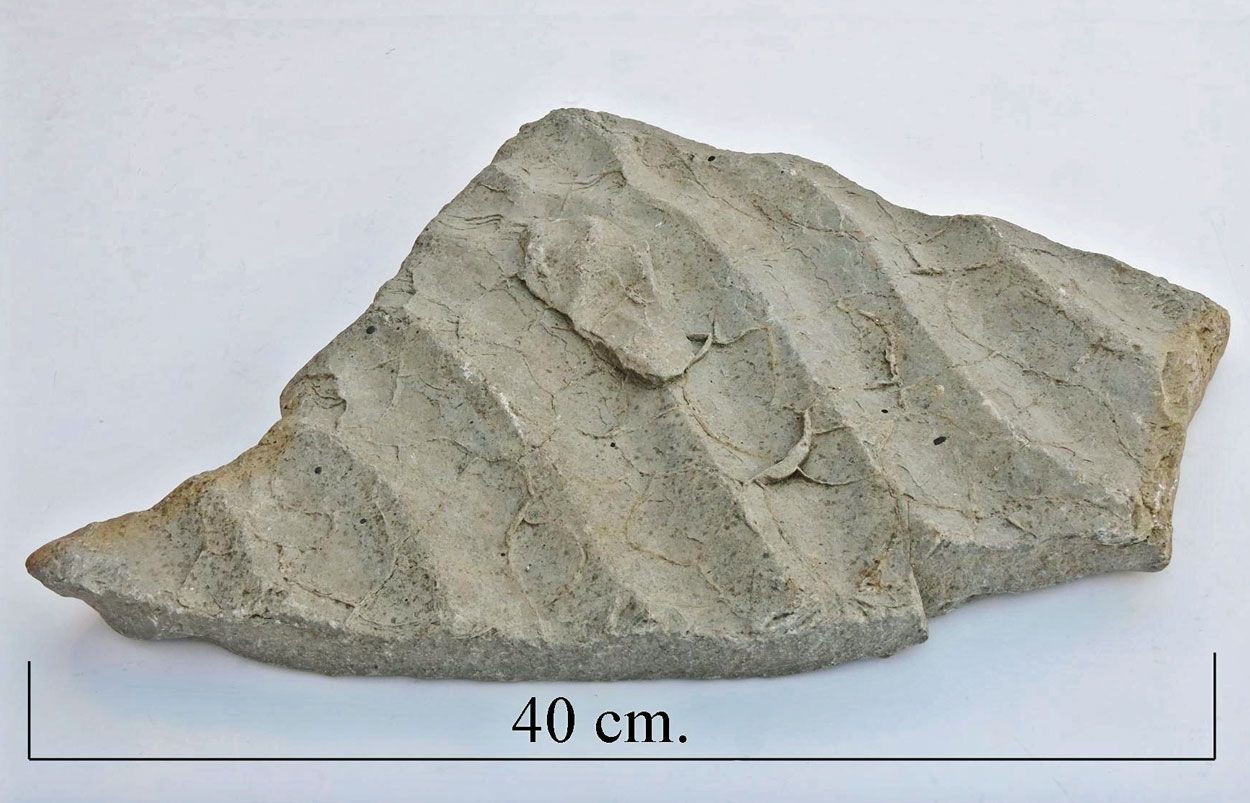
Serpentine, Cornwall.
Serpentinite is a metamorphic rock which contains one or more of the serpentine group minerals. This serpentine specimen is from Kynance cove, the Lizard, Cornwall, where there is a very large deposit of serpentinte rock. Serpentine from the general area is usually referred to as "Cornish serpentine"



